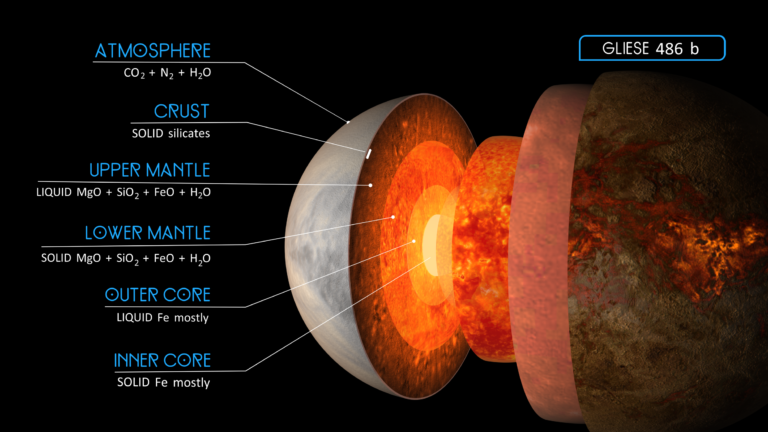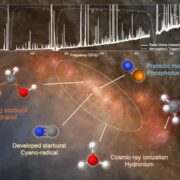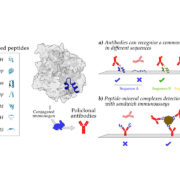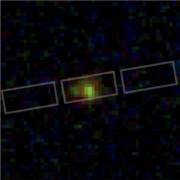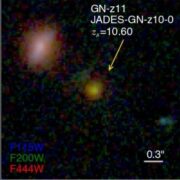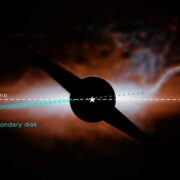An international scientific team led by astronomers from the Centro de Astrobiología (CAB), CSIC-INTA, has measured the mass and radius of an Earth-like exoplanet with unprecedented accuracy, allowing them to make robust predictions on the structure and composition of its interior and atmosphere. The detailed analysis is announced today by the journal Astronomy & Astrophysics.
Thanks to the data carefully obtained with a suite of instruments and space telescopes, a team of astronomers led by José A. Caballero, from Centro de Astrobiología CAB (CSIC-INTA), have been able to model the interior and to estimate the relative sizes of the (metallic) core and (rocky) mantle of the exoplanet Gliese 486 b, discovered in 2021.
The analysis, to be published by the journal Astronomy & Astrophysics, is so detailed that has allowed investigating things not seen before. With flashy names such as CHARA, CHEOPS, Hubble Space Telescope, MAROON-X, TESS and CARMENES, the team has also made predictions on the composition of the planet’s atmosphere and its detectability with the James Webb Space Telescope, which will soon point its segmented mirror to the planetary system.
The CARMENES Consortium, a German-Spanish team of astronomers, found in 2019 the exoplanet that resembles most the Earth. However, this exoplanet does not transit (i.e. passes in front of its star as seen from the Solar System) and, therefore, its radius cannot be well determined. Although most of them are not habitable, transiting planets are more interesting for astronomers because they allow to investigate their atmospheres and, only for the planetary systems closest to our Sun, their interiors.
The same CARMENES Consortium, in alliance with international teams of the USA, found three of the eight closest systems with such transiting planets, the last of them announced just last week.
For Caballero “Gliese 486 b has become the Rosetta Stone of exoplanetology: in the Solar System, we have the terrestrial planets Mercury, Venus, Earth and Mars. Now, the fifth best studied terrestrial planet in the Universe is Gliese 486 b“. However, although it is also one of the closest transiting planets known, travelling all the time at 10% the speed of light, a probe would take 260 years to reach Gliese 486 b.
“Probably the most important results behind our work are not the values themselves, but the opportunities that they offer to future studies”, says Esther González-Álvarez, another CAB astronomer that played a major role in the analysis.

Gliese 486 b and the future of exoplanet science
González-Álvarez refers to future studies such as the formation of planetary magnetic fields in the liquid metallic outer core, because Gliese 486 b seems to have one as our Earth. These magnetic fields may act as a shield against the storms originated in the stellar host and prevent the erosion of the atmosphere.
Would such an atmosphere be primitive and made of hydrogen and helium? Or be made of carbon dioxide and water steam from volcanic eruptions? Does Gliese 486 b has tectonics?
And although Gliese 486 b seems to be too hot to be habitable, because of its precise and accurate characterisation, it may become the first (and only, for the moment) planet where we can formulate these questions. Just a few years ago, trying to look for an answer to them was science-fiction!
Let’s remember that the first exoplanet around a solar-like star, 51 Pegasi b, was discovered in 1995. Since then, every year, astronomers discover exoplanets that are less and less massive, closer and closer, and more and more similar to Earth.
About the projects and instruments involved
Both Caballero and González-Álvarez collaborate in the CARMENES project, whose consortium comprises eleven research institutions in Spain and Germany. Its purpose is to monitor some 350 red dwarf stars for signs of low-mass planets using a spectrograph mounted at the 3.5 m Calar Alto telescope in Almería (Spain).
The scientists also obtained spectroscopic observations with the MAROON-X instrument at the 8.1 m Gemini North telescope (USA) and with the STIS instrument onboard the Hubble Space Telescope. Photometric observations to derive the planet’s size stem from the ESA’s CHEOPS (CHaracterising ExOPlanets Satellite) and NASA’s TESS (Transiting Exoplanet Survey Satellite) spacecrafts. The star’s radius was measured with the CHARA (Center for High Angular Resolution Astronomy) array on Mount Wilson, California. A battery of smaller telescopes, including amateur astronomers’, was used to determine the star’s rotation period.






